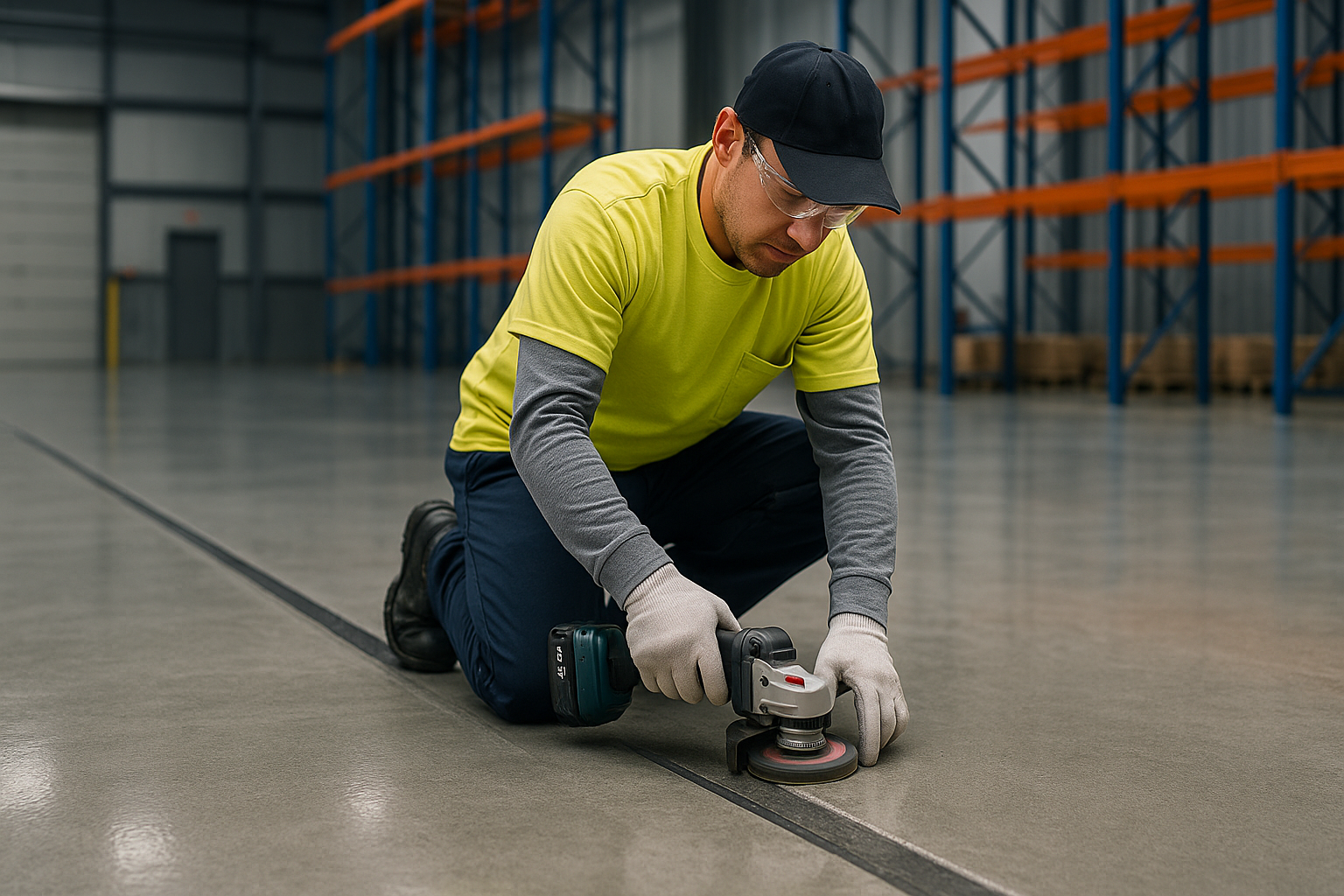Why Joints Exist in Concrete Floors
Concrete shrinks as it cures. Without joints, that shrinkage leads to uncontrolled cracking. Joints intentionally create weak planes that guide where the concrete can safely relieve internal stress.
There are three main types:
- Control Joints: Placed during installation to manage shrinkage cracks.
- Construction Joints: Occur between slab pours; connect separate placements.
- Expansion Joints: Allow movement from temperature or structural shifts.
When properly installed and maintained, these joints ensure the floor remains structurally sound while maintaining surface integrity.
How Joints Affect Flooring Systems
In resinous or polished systems, joints are the most vulnerable areas. They experience:
- Thermal expansion and contraction
- Forklift traffic impact
- Moisture and chemical intrusion
- Abrasion from pallet drag and tire wear
If not treated properly, these stress points can telegraph through the surface, leading to coating delamination, cracking, or joint spalling.
Common Joint-Related Failures
- Edge Spalling: When joint edges crumble under impact, exposing aggregate.
- Joint Reflective Cracking: Cracks telegraph through coatings or polish.
- Sealant Breakdown: Over time, joint fillers shrink, harden, or lose adhesion.
- Moisture Migration: Poor sealing allows vapor to travel upward, damaging coatings.
Each of these issues can escalate rapidly if ignored — especially in high-traffic industrial environments.
Best Practices for Joint Design & Treatment
- Proper Spacing: Joints should align with structural elements and load patterns, typically 12–15 feet apart in standard slabs.
- Timely Saw-Cutting: Control joints must be cut early enough to relieve stress but not so early that raveling occurs.
- Durable Fillers: Use semi-rigid polyurea or epoxy fillers with appropriate Shore A hardness for joint movement.
- Edge Protection: In high-load areas, joint armor or dowel baskets help distribute weight.
- Compatibility with Finish: Joint fillers must bond to densified concrete or coatings without staining or bleeding.
Surface Solutions customizes filler hardness, color, and cure speed based on the system installed and the client’s operational environment.
Maintenance: The Key to Long-Term Performance
Even the best joint fillers degrade over time. Routine inspection and re-filling are critical to preventing progressive edge damage.
Recommended maintenance intervals:
- High-traffic facilities: Inspect quarterly, re-fill every 2–3 years.
- Moderate traffic: Inspect semi-annually, re-fill every 3–5 years.
- Low traffic/commercial: Inspect annually.
Neglecting joint maintenance often leads to irreversible substrate damage — requiring full replacement instead of simple repair.
Case Study: Distribution Center in Elizabeth, NJ
A 90,000 sq. ft. polished concrete floor began showing cracks at the joints within 18 months. The original contractor used a flexible filler that couldn’t withstand heavy forklift traffic.
Surface Solutions replaced all joint filler with a semi-rigid polyurea, re-polished affected areas, and implemented a maintenance plan. Two years later, the floor remains intact, with no additional cracking or edge spalling.
Why Joint Health Matters for Polished and Epoxy Floors
Both systems depend on surface integrity.
- For polished concrete, open or failed joints lead to dusting and water intrusion.
- For epoxy or urethane coatings, failed joints create delamination paths that spread rapidly.
Treating joints as integral components — not afterthoughts — ensures every flooring system performs as designed.
Call 877-CSTM-FLR
Email carolina@cstmflr.comVisit www.cstmflr.com


.png)
